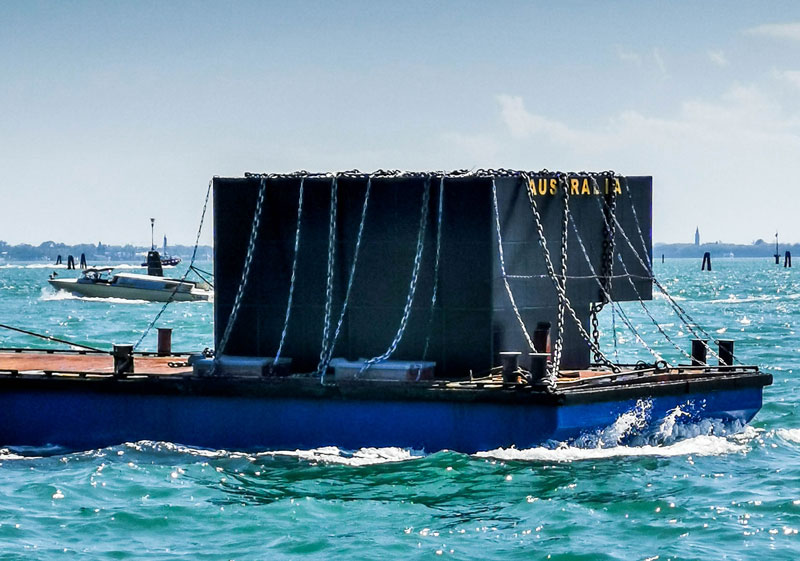
In Luis Buñuel’s masterpiece The Exterminating Angel (1962), several prosperous bourgeoise find themselves inexplicably unable to leave a house in which they had gathered for an elegant dinner party. At the end of the evening they farewell each other and compliment the host, but as they reach the door a sudden urge compels them to change their mind and find improbable excuses not to leave. As the hours and eventually days, pass the situation degenerates, food and water run out and a struggle for survival and dominance ensues, during which the sophisticated urbanites shed the niceties of civilised behaviour and turn on each other.
The professional preview, aka vernissage, of the Venice Biennale re-enacts Buñuel’s narrative conceit, but in reverse. Compelled by a mysterious drive, cultured middle-class revellers from all corners of the planet converge on Venice and segregate themselves in temporary detention centres known as the Giardini and Arsenale, the exhibition’s main venues. There they endure exhausting queues, scarce and mediocre food, dirty toilets and the rude behaviour of fellow inmates, who elbow and push each other to negotiate claustrophobic corridors and tenebrous projection rooms.
And like The Exterminating Angel, this biennale too is haunted by a palpable sense of millenarian dread. Titled after a well-known curse, May You Live In Interesting Times is an exhibition that touches on the many global threats to what John Howard once called the “safety and comfort” of our self-satisfied bourgeois lives. Climate change, the fate of first world people, mass migration, war and sectarian conflict are just some of the momentous themes addressed by the artists in the two sections of this exhibition, the national pavilions and artistic director Ralph Rugoff’s curated show.
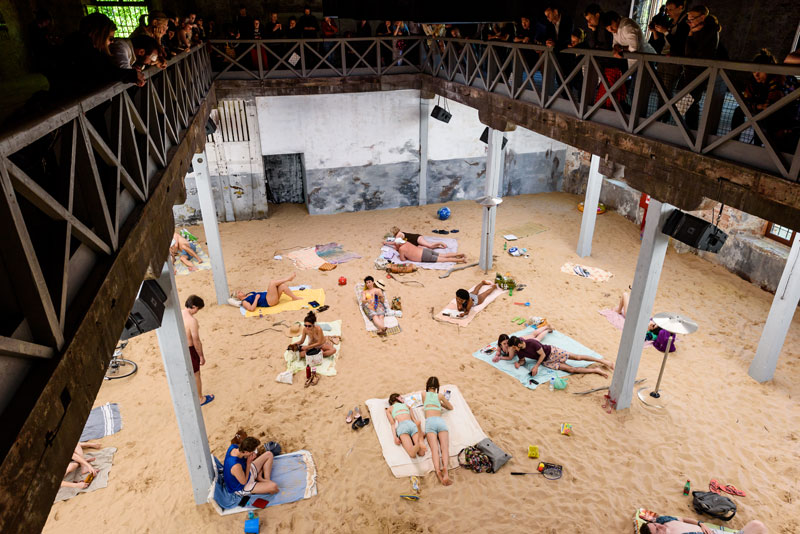
It is thus fitting that the Golden Lion for the best national representation went to Lithuania for a work that dealt with the end of times with humorous melancholy. This was Sun & Sea (Marina), an installation/performance by Rugilė Barzdžiukaitė, Vaiva Grainytė, and Lina Lapelytė. In this work, the viewers encounter a cluster of bathers of different age and gender sunbaking at a sandy beach created in the capacious interior of the Arsenale, a scene that turns ominous when the beachgoers, who are played by opera singers, start breaking into songs whose lyrics are dotted with references to an impending environmental catastrophe. At this point, the penny drops and the audience realises it’s looking at beachgoers stranded on a shore at the end of an exhausted and depleted world.
The engaging theatricality of this installation is typical of many of the best-received works in this biennale; for example, Jos de Gruyter and Harald Thys’ acerbically sardonic Mondo Cane in the Belgian pavilion, and Laure Prouvost’s Deep See Blue Surrounding You, France’s much praised offering. As many have argued, works created for biennials constitute a distinctive genre: larger budgets and the necessity to engage visitors whose viewing time is constrained by the number of works they plan to see, often results artworks that emphasise the spectacular. This is by no means a bad thing, pace Guy Debord, as too often one feels that contemporary artists turn their back on the public, as Miles Davis used to do once he became famous (although this didn’t prevent him from offering rich aesthetic experiences to his audiences).
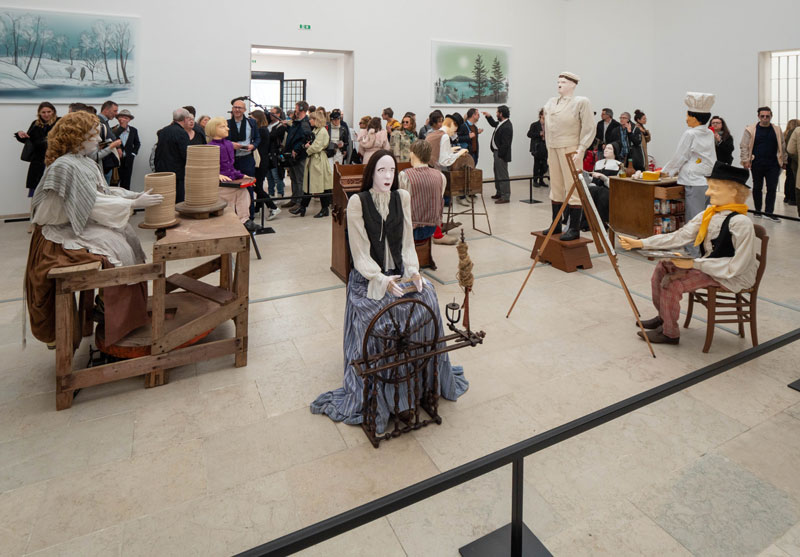
Of course, demanding conceptual works have their place, but probably not in the Venice Biennale, which explains why Itziar Okariz’s bleakly cryptical installation for the Spanish pavilion was almost deserted. One had little motivation and time to read the curatorial statement in the hope of solving the work’s many riddles, especially as little pleasure seemed to be on offer as a reward for the effort. Those looking for a rewarding aesthetic and human experience converged on the Brazilian pavilion, where they found a superb video work celebrating the vitality and creativity of underprivileged youth from the north-east of that country.
Created by Bárbara Wagner and Benjamin de Burca, this quasi-documentary is a deeply empathetic tribute to its young protagonists and their collective creation, a genre of popular dance known as swinguerra (a word that combines “swing” and “war”, guerra in Portuguese). Equally mesmerising, albeit not as viscerally captivating, was İnci Eviner’s We, Elsewhere, a video installation in the Turkish pavilion. Eviner’s video consisted of a tremendously imaginative, and amusing, flux of metamorphic transformation that affected several characters, whose bodies and interactions were fused and confused by digital manipulations.
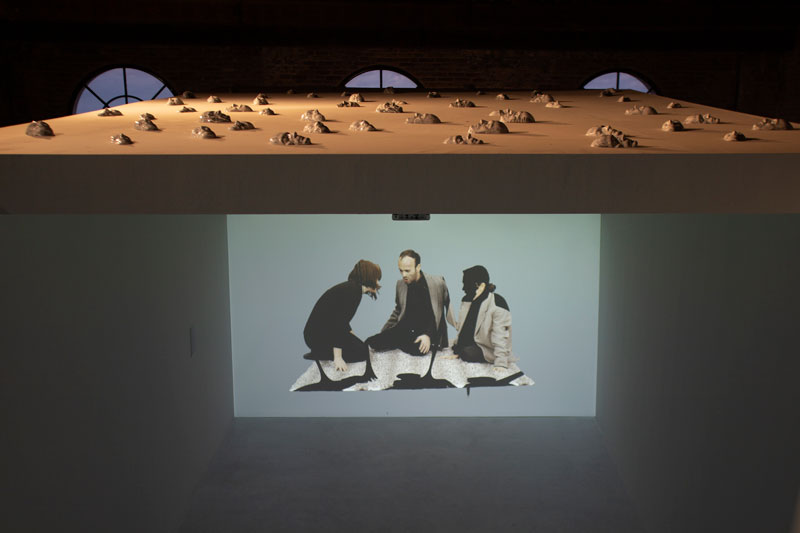
Wit, visual delight, human warmth and bodily expressiveness were less abundant in the Australian pavilion, which featured a three-channel video installation by Angelica Mesiti. Assembly, such is the work’s title, consisted of a succession of audio-visual tableaux largely set in the empty chambers of the Italian and Australian parliaments. The viewers, who sat in an amphitheatre surrounded by the projection screens, were first presented with a series of isolated personages engaged in solitary activities: a stenotype operator composing a cryptic text about a lost language (the text is based on a David Malouf’s poem), solitary musicians playing mournful chamber music, an intense-looking woman directing sign-language gestures to an absent interlocutor.
Eventually, this sombre sequence of micro events is interrupted by the irruption of energetic drum-beating male dancers, promptly followed by a row of fresh-faced teenagers, who after launching phosphorescent gadgets into the night sky (gizmos sold by street vendors all over Venice) gather into closing choir. Despite its highly polished cinematography and editing, and Max Lyandvert’s fine music score, Mesiti’s work did not resonate with me. I found its symbolism – the deserted corridors of power, the lost language of the ancestors, the redemptive energy of the young etc. – somewhat predictable, and the overall tone of the work self-consciously high-minded.
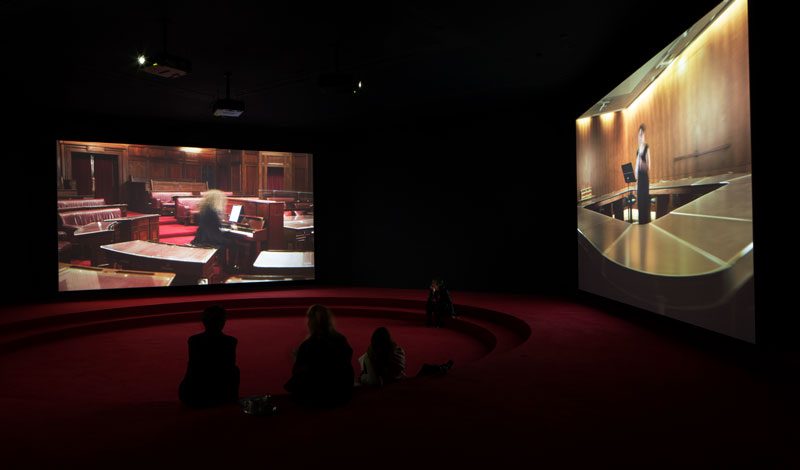
How to sum up the other half of the biennale that is, Ralph Rugoff’s sprawling group exhibition? As it is often the case when visiting a biennale, all that one can take home are trends, patterns, associations and fragmentary impressions. Here, the first thing one notices is the predominance of the hand-made over the conceptual. Techniques and mediums, some of them very traditional, are often at the forefront, as if to prove that the often-announced dematerialisation of the work of art is not as pervasive as some may think. The presence of so much painting, sculpture and other crafts is partly the result of the (relatively) new openness of European institutions to artists from countries that did not participate in the historical trajectory of western modernism and postmodernism. The process of decolonisation of contemporary art arguably started, at least in Europe, in 1989, with the highly controversial but enormously influential exhibition Magiciens de la Terre. It continued with Okwui Enwezor’s Documenta 11 and has now expanded enormously, thanks to the mushrooming of countless biennials across the globe. (The only country immune to biennale fever is the USA.)
The globalised pluralism of the contemporary art scene, and the resultant absence of shared narratives, may also explain why new art movements are no longer emerging (which is the last you remember, Neogeo? Relational Aesthetics?). It has become very difficult to claim that the new idea of art one champions constitutes the “next stage” in art’s history, as there is no longer such a thing as “one” history but instead a plurality of traditions. Consequently, while visiting larger international survey exhibitions, one struggles to avoid the uneasy feeling that, regardless of the intrinsic merits of this or that individual work or artist, there is no compelling reason to believe that any artistic approach on display is more legitimate than the others. Art may not be dead, but art history is in very bad shape.
Of course, it could be argued that it is always difficult to identify the logic of a historical moment while being immersed in it, and that one needs the distance provided by the passing of time to join the dots that give shape to a cultural epoch. But if this is the case, what would be the base – to use an old but still useful Marxist term – of this yet-to-be discovered and shared art history? Is it something as shallow as the globalised circuit of dealers, public museums, biennials, art residencies and online art media that form the infrastructure of international contemporary art? Is this the humus from which art now emerges? Is new art deriving its themes from the world or the art world?
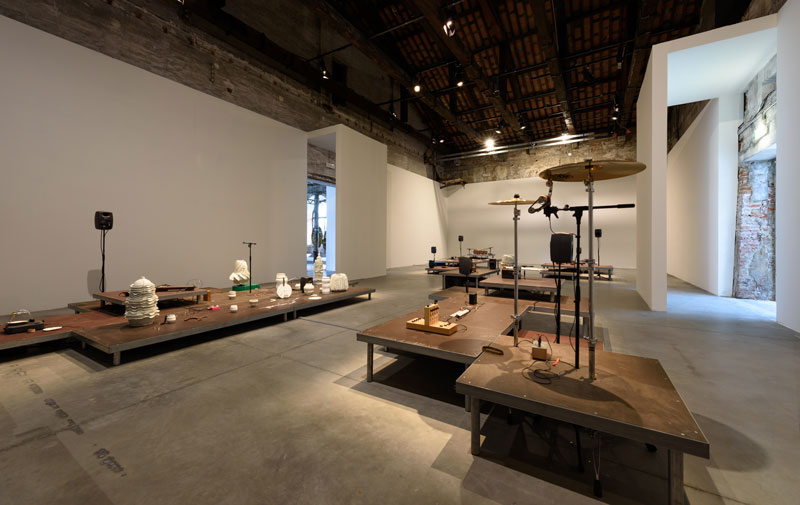
Of the many regions of the world represented here, it was perhaps the Levant that shone the brightest. One of my favourite works in the biennale was by Tarek Atoui, a Lebanese artist who collaborated with artisans from rural China to create The Ground, a spellbinding sound installation comprised of an array of handcrafted objects and utensils transformed into sources of gentle sonic delight. This exquisite work was inspired by the aural environment of the farming community in which it was developed, its fusion of sculptural and musical elements creating a much-needed oasis in which hurried biennale visitors could pause and rediscover the pleasure of “slow art”.
In addition to the many artists from the “global south”, Rugoff also achieved a historic first, at least for the Venice Biennale, by including a roughly equal number of women and men participants. Many of the women focused on self-presentation, an historically recurrent theme in feminist or women’s art, the impetus for which derives from the desire to disrupt representations of femininity constructed and imposed by patriarchy. In this exhibition, the most powerful example of this approach was photographic self-portraits by Mari Katayama, a Japanese artist born with a genetic disorder that affected the growth of her limbs. Her disabilities are the main subject matter of strikingly beautiful works that often allude to representation of body deformity in art, such as, for instance, Hans Bellmer’s photos of deconstructed dolls.
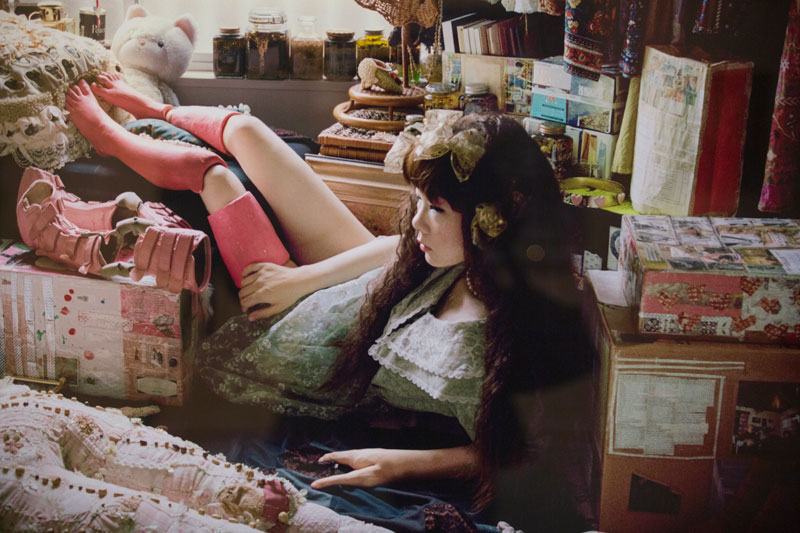
Speaking of marginality, this biennale was bookended, and perhaps paradoxically defined, by two atypical exhibits, in that one was not an artwork and the other not part of the exhibition. Both were vessels, respectively a boat and a barge, and both crashed the biennale party, introducing a salutary discordant note into the proceedings. The first craft was the recovered wreck of a boat that sunk in the Mediterranean, drowning 800 would-be migrants from North Africa. This most tragic of ready-mades was shown in Venice thanks to the efforts Christoph Büchel, an Icelandic-Swiss artist, who managed to raise the funds and obtain permission to purchase the wreck and transport it to Venice. The contorted, rusty carapace of the stricken boat was propped up on steel buttresses, its bulk looming over the busiest thoroughfare of the Arsenale. Büchel was heavily but, in my view, mistakenly criticised for his intervention. Why the outrage? We don’t condemn history museums for exhibiting relics and ruins leftover from the most immense human tragedies – from the Holocaust to Hiroshima – and we trust those objects to speak silently about the unimaginable suffering from which they emerged. All Büchel did was to take advantage of the opportunity provided by the biennale to leverage the support necessary to show the global art bourgeoise something they may prefer to keep out sight.
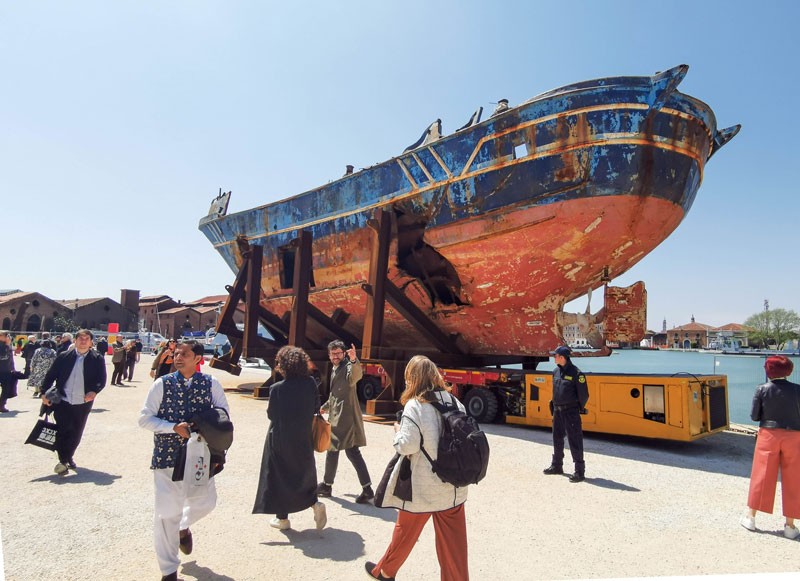
I encountered the second vessel by chance while leaving Venice at the end of the vernissage. It was a barge that sailed by my vaporetto, supporting a scaled-down replica of the Australian pavilion, which had been bound with a profusion of heavy chains. It is a work by Richard Bell not included in the official selection. The artist had proposed it but the Australia Council panel rejected it, though it was realised, with financing by a syndicate of supporters. One of the five shortlisted proposals for the Australian Pavilion in 2019, unsuccessful in its bid, Bell’s nevertheless went ahead with financing by a syndicate of supporters including the Australia Council. Sailing back and forward on the Canal Grande, like an industrial-looking Marie Celeste or ghost pirate ship, the barge offered a wittingly subversive reminder of another human catastrophe we often prefer to forget.
